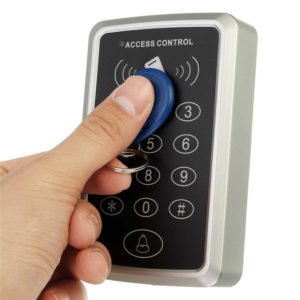The Basics of Access Control Miami
Access control Miami safeguards digital and physical assets by verifying users' identities as they log in to a system and granting permissions tied to specific roles. It also allows admins to monitor changes in user privileges and ensures regulatory compliance.
The process begins with authentication, which identifies a subject's identity through something they know (passwords), something they have (access card or key), or something they are (fingerprint, retina scan, etc.).
Authentication
Authentication is the gatekeeper that decides who gains access to an organization's resources, such as critical systems, networks, business applications, and web applications. It also defines the level of privilege granted to a user based on their role or permission structure.
Enhanced security: Limits the number of people with access to sensitive data and programs, reducing the odds of insider threats. Regulatory compliance: Tracks who has access control Miami to regulated information, enabling you to comply with standards like GDPR and HIPAA.
Simplified guest management reduces risk by granting visitors temporary credentials and makes monitoring and auditing their activities easier. Streamlined auditing offers detailed records of user activity that make it easy to trace which accounts performed what actions and when. Enhanced accountability also helps prevent privilege creep by ensuring that only the minimum privilege is granted to users. This is called the Principle of Least Privilege. It's essential to use strong authentication protocols, such as MFA, to verify users and ensure they are who they say they are.

Enrollment
Enrollment is the process that links a device to a user account and enables monitoring of the device for compliance with security policies. By associating devices with a specific user account, administrators can simplify management and support for the device by knowing its configuration and access rights. It also improves user experience and productivity by streamlining the setup of a device to match their individual needs.
Organizations can use enrollment to implement a policy that requires users to authenticate using MFA on their devices when they access resources that aren't protected by MFA by default. Admins should be careful not to over-enroll new users because that can create friction for users and lead them to bypass MFA. This can be controlled by setting the New User Policy to "Require Enrollment" or "Allow Access," which exempts new users from MFA. You can set up enrollment security for user IDs by creating enrollment access groups and permission lists.
Permissions
The next step is to define the access control Miami policy, which outlines the types of permissions and access granted to each user. This typically includes a set of rules that balance security with usability. For example, a policy might insist that human resources specialists can only create network accounts but not change them or that customer service representatives can view but not modify the records of customers in their area.
Each type of permission has a unique octal code, which identifies the rights granted to that person or resource. Permissions can range from 0 to 7, with the first two digits representing the U (User), G (Group), and P (Public/World). The third digit represents whether it's read, write, or execute. The policy may also specify devices or locations and allow access based on the users' position in the company (role-based). It might use biometric verification for physical access to systems and authentication. Finally, it should have provisions for provisioning and de-provisioning when users move to new roles or leave the company.
Monitoring
Monitoring access control Miami is an integral part of the access management process. It involves recording and analyzing user behavior to identify anomalies, threats, and compliance violations. This information can then be used to strengthen policies and ensure that users have the right level of access.
Overly permissive access permissions can increase insider threats and security risks, as employees may be able to access sensitive data or systems they should not have. Insufficient visibility into access can also make it challenging to detect unauthorized activity, significantly when roles change or users are offboarded.
Role-based access control is a popular method of restricting user access to specific areas of a network based on their role within an organization. This method provides security without limiting productivity and can help companies stay compliant with regulations, such as GDPR or HIPAA. However, it can be challenging to manage and maintain, especially in large organizations with multiple departments.
https://www.signnow.com/fill-and-sign-pdf-form/379687-miami-dade-badge-application-fill-online-printable-fillable?msclkid=a27e4713fb931c5632942092ddddce74&utm_source=bing&utm_medium=cpc&utm_campaign=US_FL%20Other%20Forms&utm_term=miami%20access%20control&utm_content=*2020%20FL%20MIA%20Access%20Control%20Form,%20%5B2020-10%5D